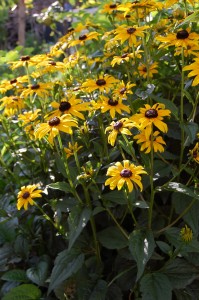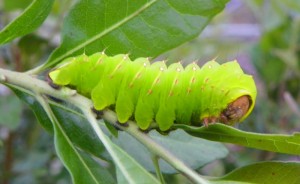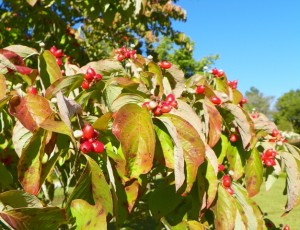How to Landscape to Attract Birds
go.ncsu.edu/readext?189070
en Español / em Português
El inglés es el idioma de control de esta página. En la medida en que haya algún conflicto entre la traducción al inglés y la traducción, el inglés prevalece.
Al hacer clic en el enlace de traducción se activa un servicio de traducción gratuito para convertir la página al español. Al igual que con cualquier traducción por Internet, la conversión no es sensible al contexto y puede que no traduzca el texto en su significado original. NC State Extension no garantiza la exactitud del texto traducido. Por favor, tenga en cuenta que algunas aplicaciones y/o servicios pueden no funcionar como se espera cuando se traducen.
Português
Inglês é o idioma de controle desta página. Na medida que haja algum conflito entre o texto original em Inglês e a tradução, o Inglês prevalece.
Ao clicar no link de tradução, um serviço gratuito de tradução será ativado para converter a página para o Português. Como em qualquer tradução pela internet, a conversão não é sensivel ao contexto e pode não ocorrer a tradução para o significado orginal. O serviço de Extensão da Carolina do Norte (NC State Extension) não garante a exatidão do texto traduzido. Por favor, observe que algumas funções ou serviços podem não funcionar como esperado após a tradução.
English
English is the controlling language of this page. To the extent there is any conflict between the English text and the translation, English controls.
Clicking on the translation link activates a free translation service to convert the page to Spanish. As with any Internet translation, the conversion is not context-sensitive and may not translate the text to its original meaning. NC State Extension does not guarantee the accuracy of the translated text. Please note that some applications and/or services may not function as expected when translated.
Collapse ▲With winter approaching, you may be thinking about buying or filling a birdfeeder. Adding a birdfeeder to the landscape is a good way to draw birds into your garden, but if you want to attract a wide range of birds and have them call your backyard home, you need to create a suitable habitat. Modifying your landscape to make it a welcoming place for migrating and resident birds is not difficult and usually just involves adding a few more plants.
Grow Your Own Birdfeeder!
Seed and berry producing plants are essential food sources for many bird species. Native plants are particularly well suited to our climate and our native birds. A few commonly available native plants appropriate for home landscapes that produce seeds and berries that birds favor include beautyberry (Callicarpa americana), fringetree (Chionanthus virginicus), eastern red cedar (Juniperus virginiana), dogwood (Cornus florida), wax myrtle (Myrica cerifera), river birch (Betula nigra), southern magnolia (Magnolia grandiflora), oaks and pines.
Native perennials that produce seeds for birds include black-eyed susans (Rudbeckia fulgida), purple coneflower (Echinacea purpurea), ‘Fireworks’ goldenrod (Solidago rugosa), tickseed (Coreopsis species), swamp sunflower (Helianthus angustifolius), aromatic aster (Aster oblongifolius) and panic grass (Panicum virgatum). To benefit birds, do not cut these perennials back in fall. Instead wait to cut them back in early spring to allow birds to feed on their seeds over winter. Evergreen plants, such as wax myrtle, yaupon (Ilex vomitoria), inkberry (Ilex glabra), and American holly (Ilex opaca), provide shelter from wind and rain and should be included in any wildlife habitat planting.

The seeds of perennials like Rudbeckia ‘Goldstrum’ are eaten by birds in winter. Wait until late winter to cut these plants back.
Plant in Layers!
To create the best habitat, include a variety of plants with different heights, flowering times, and growth forms. Since different types of birds prefer to nest at different heights, planting layers of groundcovers, shrubs, small trees and large trees will allow many different kinds of birds to live in the same horizontal space. Diverse plantings also ensure a wide range of food is available throughout the year when different bird species are present. Some birds, such as indigo buntings, scarlet tanagers, and orchard orioles, only visit our area for a portion of the year and are known as migratory species. Others, known as resident species, live here year round and include cardinals, bluebirds, and chickadees. Planting evergreen trees and shrubs like holly or cedar is particularly important for resident birds that need places to shelter from weather and predators in winter.
Plant Now!
Fall is a great time to plant trees, shrubs, and perennials in our area. Planting in fall or winter allows plants to establish roots before the heat of summer sets in. Adding bird friendly plants to your landscape this fall is simple and expert advice is available from NCSU’s Going Native website, http://www.ncsu.edu/goingnative/. Developed by specialists with NC State University’s Wildlife Extension Program, this site offers research based advice and step by step instructions on how to incorporate native plants for wildlife into your yard, and includes a searchable plant database that allows you to create a personalized list of native species for your landscape conditions.
Minimize Pesticides

Caterpillars are an important food source for baby birds. Instead of spraying pesticides, allow birds and other beneficials to control insect pests.
Many birds are prolific insect eaters, providing a valuable service to plants and people by eating harmful pests. As the seasons change, so do the availability and types of food present for birds. In spring, both migrant and resident birds feed on caterpillars and other insects found on new plant growth. Insects and spiders are especially important to young songbirds born in spring and summer because these foods fill the birds’ protein and calcium requirements for bone and tissue growth.
Plants provide food and shelter for many insects, which in turn are food for many different birds. Pesticides kill both good and bad insects, removing a valuable nutrient source from the food chain. Rather than relying solely on pesticides for insect control, create a balanced ecosystem where good insects, birds, and other beneficials keep plant-damaging insect populations in check naturally.
Learn More
Learn more about gardening for wildlife from this past Pender Gardener article: //pender.ces.ncsu.edu/2012/05/gardeners-going-wild/
Visit your local Cooperative Extension office to learn more about gardening and landscape care. Go to https://www.ces.ncsu.edu/local-county-center/ to find your county Extension center.
- If you live in Pender County, call 910-259-1235
- In New Hanover County, call 910-798-7660
- In Brunswick County, call 910-253-2610
- In Onslow County, call 910-455-5873
- In Duplin County, call 910-296-2143




